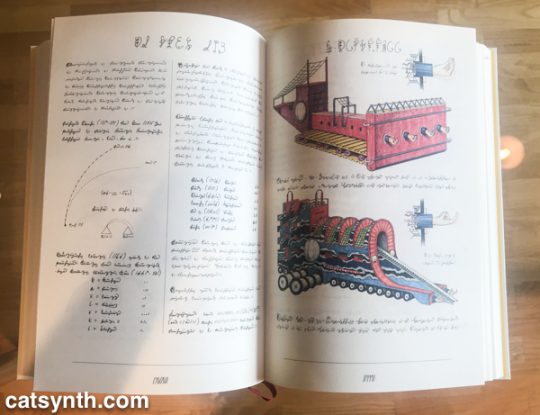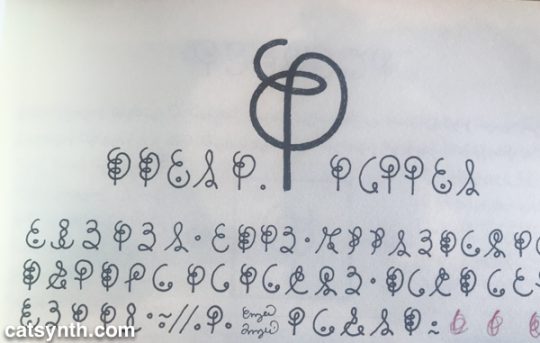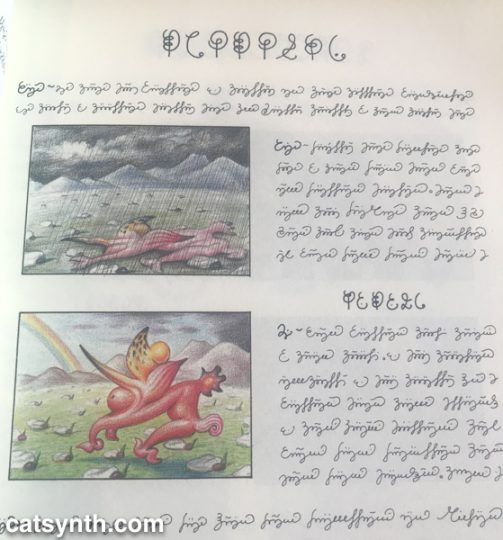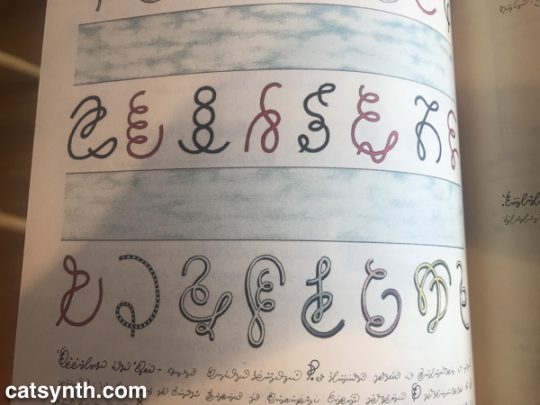Last Friday, I attended an exhibition for the Artist in Residence program at Recology San Francisco (formerly known as, SF Recycling & Disposal, Inc.). Yes, this was an art opening at the SF dump. The program has been around for almost twenty years, and provides space and support for artists who work with materials from the city’s waste stream, including recycled wood, paint and metal. Pretty much anything the artists can scavenge. This exhibition marked the end of the residency for artists Erik Otto and Christina Mazza.
We first enter the gallery through an anteroom, with some smaller works including Erik Otto’s Rebuild, featuring the title word cut into scrap paper (including a musical score and furniture assembly instructions) and illuminated by a recycled light box.

Erik Otto. Rebuild, 2010. (Click to enlarge.)
The title and the materials of this piece set the tone for the show. In addition to my standing interest in text as a visual element, I liked the inclusion of music as part of its texture.
Moving into the main room, one immediately sees Otto’s Road of Prosperity (The Start of a New Beginning), with over one hundred small wooden houses suspended from the ceiling on fishing line, forming a chaotic spiral that descends towards the ground.


[Erik Otto. Road of Prosperity (The Start of a New Beginning), 2010. (Click each image to enlarge.)]
The houses, made of recycled wood, all have a similar iconic shape. Stepping back, one can see the the wooden frame at the base is itself another house. Indeed, the houses reappear throughout Otto’s work, either as central or peripheral elements, in his paintings and mixed media pieces and even in a video installation featuring recycled television sets:

Erik Otto. In the Abundance of Water, We Are Still Thirsty. (Click to enlarge.)
I am drawn to recurring icons in a series of work. So what is the significance of the houses? Certainly, they are a symbol of our current economic crisis, and a very visible part of natural and human-made disasters. Otto’s own words are informative:
My work is a narrative told by the recurring characters/elements I use often in my artwork. The house is a physical embodiment of our spiritual being. Inspired by the notion that being home is “knowing” – knowing your mind, knowing your heart – that if we know ourselves, we are always “home”, anywhere. It is often depicted in chaotic landscapes and is found seeking safety from a storm and/or rising water levels, which refer to our current social and economic climate.
His paintings, which also prominently feature the houses, include other elements such as found text, such as the “OPEN” sign in the large painting Moment of Reflection. Devotion 5 features a house (perched on stilts above a body of water) painted over book covers and a Scrabble board – certainly a powerful symbol of out-of-context text.

Erik Otto. Moment of Reflection. (Click to enlarge.)

Erik Otto. Devotion 5. (Click to enlarge.)
While Erik Otto’s work seemed to focus on discrete elements, icons and text, Christina Mazza’s pieces were about more continuous textures. Many of her finely detailed drawings feature entanglements of string or rubber bands or rope.

Christina Mazza. Construction. (Click to enlarge.)
She takes this theme of complex tangles to a larger scale with this wall piece made of shredded packing paper.

Christina Mazza. (Click to enlarge)
Mazza presents a very different texture with Redemption: SF Dump, which features a video inset in a wall made of brightly colored wood panels. Up close, one can see the imperfections, nails and slightly off angles of the the recycled wood. From a distance, it can seem a texture of precisely generated color rectangles with a moving image at the center.

Christina Mazza. Redemption:SF Dump. (Click to enlarge)
Mazza found inspiration in the discoveries she made at the dump, and documents her adventures on her blog. Looking through the images, I can see piles of discarded items that served as “subjects” for her drawings. One image which I found interesting but was not reflected in the pieces at the show was a discarded Chinese paper frame .

Christina Mazza. Chinese paper frame.
I find this image a fitting conclusion as I turn my attention to other recently visited exhibits and my own upcoming projects.
Thanks to Recology SF for providing many of the photos for this article. You can see more pieces from this exhibition and previous artists in residence at their flickr site.





















